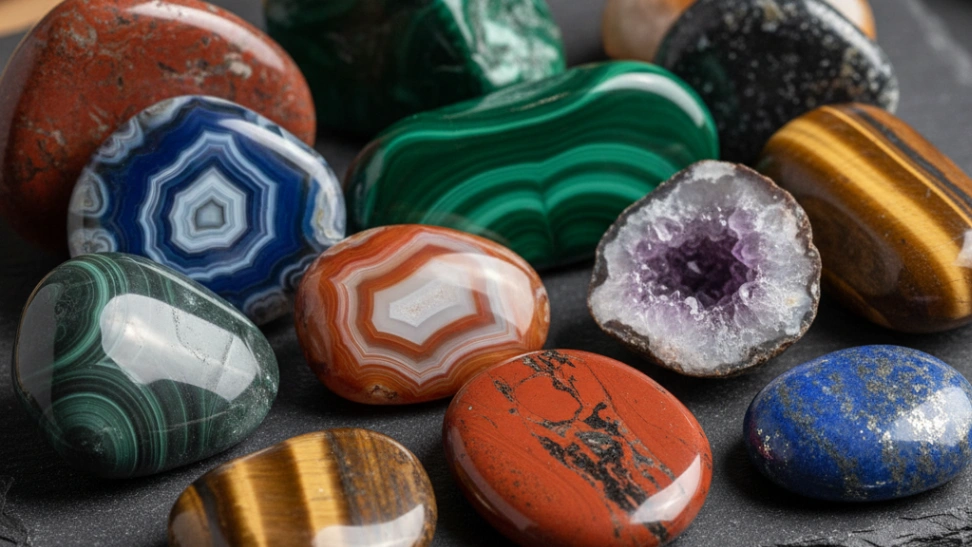The rock tumbling process itself is typically executed in a series of distinct stages, each employing progressively finer abrasive grits. The journey begins with the "rough grind," where raw, unshaped stones are placed inside a durable rubber barrel alongside coarse silicon carbide grit and water. This mixture is then tumbled continuously for an extended period, often ranging from several days to even a few weeks, depending on the hardness and initial condition of the rocks. The aggressive action of the coarse grit effectively shapes the stones, rounds off sharp edges, and removes significant imperfections and pits. Following this initial stage, the rocks and barrel must be thoroughly cleaned to prevent any coarser grit particles from contaminating subsequent steps. The stones then transition to medium grit, followed by a fine grit, and finally, a superfine pre-polish and then a polishing compound, which is usually aluminum oxide or cerium oxide. Each successive stage typically requires fewer tumbling days than the rough grind, but demands even more diligent cleaning to ensure no cross-contamination, which is paramount to achieving a brilliant, blemish-free final polish. The anticipation built during these often-lengthy tumbling cycles is immense, culminating in the exciting reveal of perfectly smooth, glossy, and beautifully reflective finished pieces.
An integral and perhaps the most adventurous part of the rock tumbling hobby is the acquisition of suitable raw materials. Dedicated rockhounds frequently embark on excursions into diverse natural environments such as dry riverbeds, picturesque beaches, rugged desert landscapes, or even old quarries and mining tailings to collect intriguing specimens. This hands-on aspect of the hobby connects enthusiasts directly with nature and the science of geology, fostering a deeper understanding of different rock types, their specific formations, and the optimal locations for their discovery. Identifying promising rough stones requires not only an experienced eye for potential but also a foundational knowledge of mineral properties and geological indicators. While some hobbyists opt for the convenience of purchasing rough material from reputable geological suppliers, many find that the sheer thrill of discovery and the personal connection forged through field collecting are an irreplaceable and immensely satisfying component of the entire rock tumbling experience. This element of treasure hunting adds a unique, exploratory layer to the otherwise methodical and somewhat passive tumbling process.
The human fascination with polished stones for aesthetic, spiritual, or practical purposes dates back many millennia, deeply embedded in the history of ancient civilizations. Archaeological excavations across the globe, from the Cradle of Civilization in Mesopotamia to the tombs of ancient Egypt and the vibrant cultures of pre-Columbian Americas, have unearthed compelling evidence of meticulously polished stones utilized for intricate jewelry, utilitarian tools, and elaborate decorative items. Early methods for achieving such finishes were undoubtedly labor-intensive, likely involving manual grinding of stones against harder surfaces with the aid of natural abrasives like sand and water, a testament to human ingenuity and persistence. The modern electric rock tumbling machine, however, is a relatively recent innovation, with its significant development occurring primarily throughout the 20th century. As industrial processes for polishing metals, ceramics, and optics became increasingly sophisticated, similar mechanical principles were adapted and applied to the realm of lapidary arts. The widespread availability of affordable electric motors, combined with the development of durable rubber barrels capable of withstanding prolonged abrasive action, democratized rock tumbling. This transformation allowed it to evolve from a niche industrial technique into a widespread and beloved amateur hobby, experiencing particular surges in popularity among enthusiasts of geology and crafts following the mid-century boom in home lapidary equipment.
Beyond the profound individual satisfaction derived from each polished stone, rock tumbling inherently fosters a vibrant and supportive community. Enthusiasts actively engage in sharing invaluable tips on rock identification, optimal grit usage strategies, meticulous machine maintenance, and proudly showcase their magnificent finished pieces to admiring peers. Online forums, dedicated local lapidary clubs, and expansive annual gem and mineral shows provide invaluable platforms for this rich exchange of knowledge, experience, and camaraderie, often leading to lifelong friendships among like-minded individuals. The resulting polished stones themselves boast an impressive array of potential applications: they can be expertly crafted into unique pieces of jewelry, artfully arranged for decorative purposes within homes and gardens, thoughtfully incorporated into various mixed-media art projects, or simply cherished as treasured additions to a personal collection, each with its own story. For many adherents, the hobby transcends mere craftsmanship; it serves as a deeply meditative practice, a slow, deliberate journey that cultivates profound patience, meticulous focus, and an enhanced appreciation for the subtle yet profound beauty of the natural world. It epitomizes a journey from the raw, unrefined earth to gleaming, artistic perfection, appealing broadly to individuals who revel in scientific processes, the thrill of collecting, and the tangible expression of creativity.



